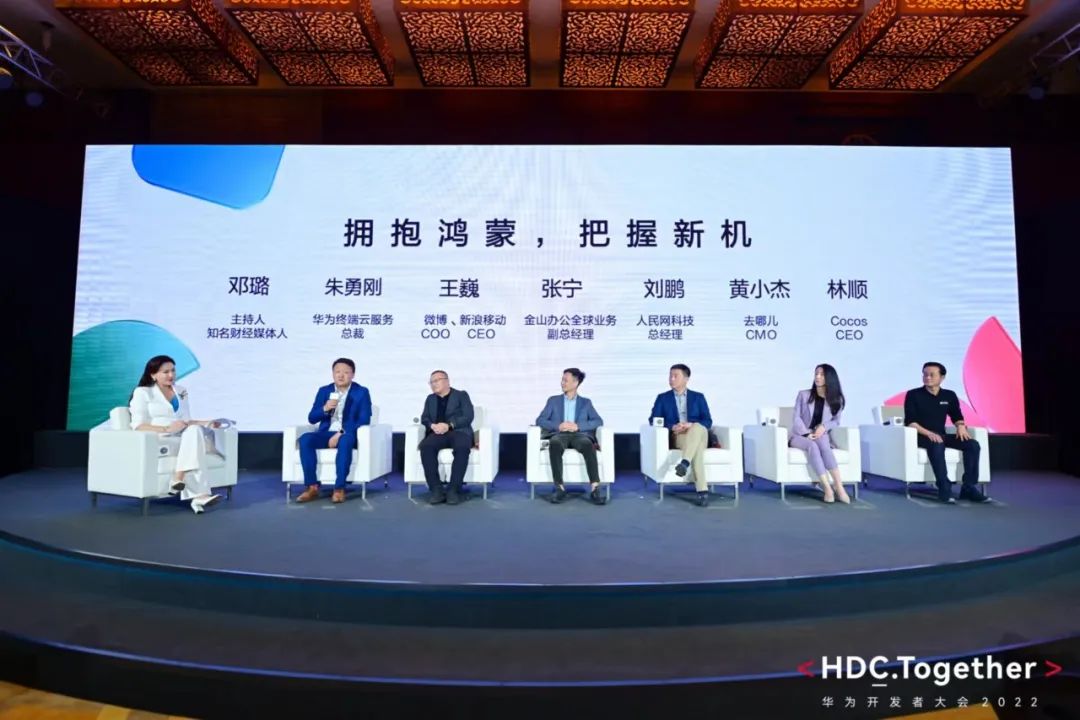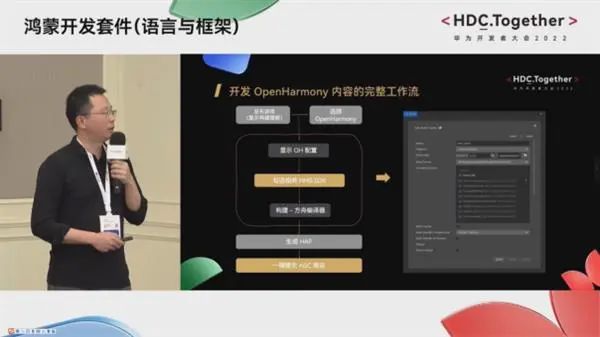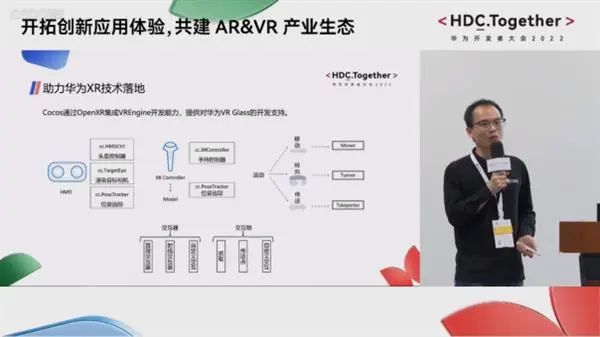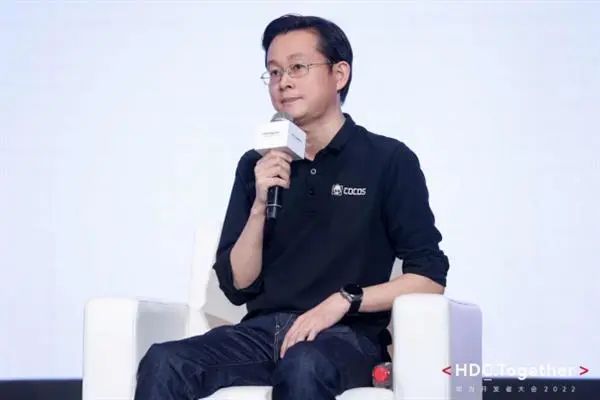The Huawei Developer Conference 2022 (HDC2022), themed "Innovation for the Future," was held in Dongguan, China, this week. As a strategic partner of Huawei, the Cocos Engine was also invited to the conference to introduce how our 3D engine can help build the HarmonyOS ecosystem and the latest progress of working with Huawei to expand AR/VR technology applications. Our work was awarded at the event for bringing HarmonyOS to Cocos Creator and being a valued partner.
At the same time, in the much-anticipated conference talk, Cocos CEO Lin Shun shared the thoughts and paths of cutting-edge technology innovation application and ecological development with industry experts such as Zhu Yonggang, President of Huawei Mobile Cloud Services, Wang Wei, COO of Weibo & CEO of Sina Mobile, Zhang Ning, Vice President of Global Business of Kingsoft Office, Liu Peng, General Manager of People's Daily Technology, and Huang Xiaojie, CMO of Where to Go, an online travel agency.

Lin Shun mentioned that Cocos and Huawei have always been very close partners. After being the first to complete support for HarmonyOS in 2021, in October this year, Cocos completed system adaptation for OpenHarmony based on Cocos Creator 3.6.1 and released Cocos Creator 3.6.1-OH Community Edition, which means Cocos developers can quickly build 3D and 2D applications for an OpenHarmony system.

In this conference, Cocos engine architect Simon Zhang introduced the complete workflow of developing games, system configuration, project building, HAP generation, and one-click submission to the AGC store using the Cocos engine and showed a demo video of the 3D game "Eagle Strike" running smoothly on HH-SCDAYU200 development board, commonly used for OpenHarmony development
To let developers understand the system performance and the advantages of the OpenHarmony architecture, HDC2022 had a game experience area where developers can get hands-on experience with the game's graphics performance and smooth handling. Developers could play Eagle Strike, a game built with Cocos Creator 3.6.1-OH Community Edition, and developers can download the source code from GitHub to experience it.
In the subsequent deep adaptations for OpenHarmony, Cocos will continue to focus on toolchain complementation, performance details tuning, and interface compatibility and continue to adapt "cyberpunk" style 3D rendering projects with next-generation 3A graphics standards, further expanding the depth of cooperation between Cocos and OpenHarmony and the imagination of graphics rendering, and providing a benchmark for more This will further expand the depth of Cocos' collaboration with OpenHarmony and the imagination of graphics rendering, and provide a benchmarking effect for more commercial game projects to be released to OpenHarmony.

In the AR/VR technology sub-forum, Cocos XR Technical Director Wang Qingli brought information about Cocos' ability to empower Huawei XR ecosystem development from a tools perspective. OpenXR is highly compatible with various technologies such as HMD/3Dof/6Dof, forming an integrated tool chain for development, build and release.

Not long ago, Cocos officially released the XR content development tool Cocos CreatorXR, which allows developers to quickly build XR projects for various hardware and export them with one click while ensuring a low-risk, lightweight, and low-power rendering framework for their projects.
In the fireside conversation, Lin Shun shared the future support plan of Cocos in the HarmonyOS ecology, which covers content production and becoming a firm co-constructor of the HarmonyOS ecology. As a content development tool, Cocos currently covers the content production of all HarmonyOS-rich devices. The field will cover not only games but also all 3D digital content.
In addition, Lin Shun said that the HarmonyOS ecology emphasizes the ability of intelligent panorama, multi-end linkage, and device flow, which coincides with the high scalability of the Cocos engine. Cocos has unique advantages in mobile phones and lower arithmetic platforms, which are very suitable for multi-end device interaction, and will be able to grow stronger in the ecology of OpenHarmony.

In the future, Cocos will continue to work together with the HarmonyOS Ecology team to build a more prosperous developer ecology, continuously improve the development toolchain from a tool perspective, simplify the development and content launch process, solidify the technical base of software and hardware integration for the era of card-based and atomized services, and to allow more 3D content developers (enterprises, individuals, students, etc.) of different sizes and abilities to develop more efficiently and concisely.








